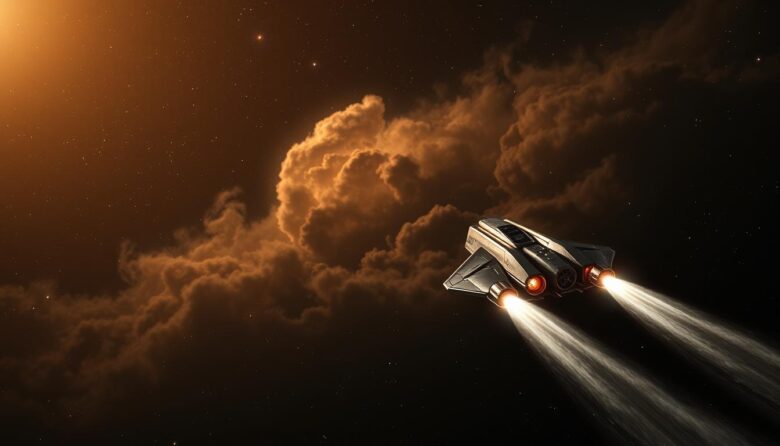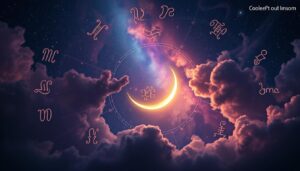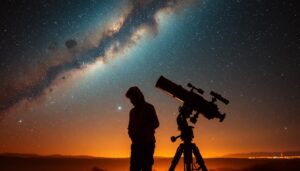For thousands of years, humans have gazed up at the sky, wondering about what’s out there. The stars and planets spark our imagination, mixing science with stories. This curiosity drives us to explore, not just physically, but through stories that imagine the cosmos.
From ancient myths to today’s movies, these tales shape our views of alien worlds and future tech. They inspire us to dream big and push the limits of what we know.
Space dreams spark innovation. The same wonder that drives NASA’s missions also fuels books and movies. Speculative fiction turns “what if” into real possibilities, bridging the gap between dreams and reality.
Key Takeaways
- Space exploration and storytelling are linked through human curiosity.
- Speculative fiction helps us visualize possibilities beyond current technology.
- Stories about space encourage scientific progress and global collaboration.
- Our dreams of other worlds reflect hopes for discovery and survival as a species.
- Books and films inspire new generations to pursue STEM fields and space research.
The Human Fascination with the Cosmos
Humans have always looked up at the stars. This curiosity drives us to explore space and speculative fiction futures where new worlds await. Every culture’s stories show this timeless quest.
The Role of Curiosity in Space Exploration
Early astronomers like Galileo and Hubble turned wonder into science. Their tools changed from simple telescopes to satellites. Today, this curiosity pushes missions like NASA’s Perseverance rover to Mars.
Historical Perspectives on Astronomy
| Era | Key Advances | Key Figures |
|---|---|---|
| Ancient Greece | Constellation naming | Hipparchus |
| Renaissance | Heliocentric model | Copernicus |
| Modern Era | Moon landing | Neil Armstrong |
Cultural Myths and Legends About the Stars
- Greek myths tied gods to constellations like Orion.
- Native American tales explain star patterns as ancestral journeys.
- These stories inspire speculative fiction futures, blending old wisdom with tomorrow’s possibilities.
Myths like these show that every scientific leap starts with a story. As we uncover cosmic mysteries, ancient dreams meet tomorrow’s tech. This proves imagination and discovery are cosmic partners.
The Impact of Space Exploration on Society
Space exploration changes our daily lives in many ways. Satellites help guide our smartphones, and medical tools come from space tech. These advancements bring both hope and fear, showing our complex views on progress.
Technological Advancements from Space Research
Space missions have led to amazing tech we use today:
- Medical imaging tools improved by space sensors
- Water purification systems for space stations
- Smartphone cameras with NASA-designed sensors
These innovations look towards a tech-driven future. But, there’s a debate about the ethics of such progress. This echoes the warnings of dystopian stories about unchecked advancement.
Inspiration for Future Generations
“Every rocket launch is a lesson in what’s possible.”
Programs like NASA’s Artemis mission and SpaceX’s reusable rockets spark curiosity. Schools work with agencies to offer STEM programs. This turns kids’ dreams into real careers.
Films like The Martian mix survival stories with real science. They show how fiction and reality blend.
Economic Benefits of Space Programs
| Benefit | Example |
|---|---|
| Job Creation | Private space companies employ over 100,000 in the U.S. |
| Private Investment | Commercial space ventures raised $5 billion in 2023 |
Economic gains show the benefits of space programs. Yet, there are fears about resource depletion. Partnerships between governments and firms offer a path to sustainable growth, highlighting space’s role in our future.
The Science Behind our Dreams of Other Worlds
Our curiosity and scientific drive push us to dream of other worlds. We use telescopes and thought experiments to imagine life beyond Earth.
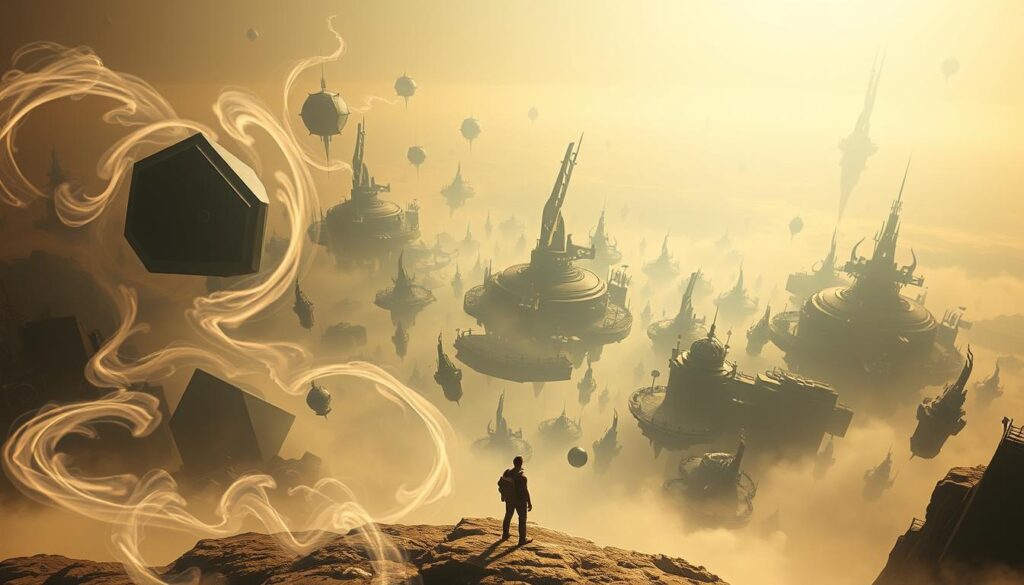
Psychological Factors Influencing Our Fascination
Our brains love to find patterns and possibilities. Research shows that thinking about alien life sparks creativity and problem-solving areas in our brains. It’s not just daydreaming; it’s a survival skill. Curiosity makes us wonder: What if?
The Influence of Popular Media on Perceptions
“Space is the place where humanity’s hopes and fears collide.” — Neil deGrasse Tyson
Books and movies like Interstellar or Arrival make science easy to understand. They turn complex ideas into stories. Even NASA uses media to get people excited about space.
The Concept of Space as a New Frontier
Exploring new places has always driven us forward. Today’s space race is like the old days:
- 15th-century sailors mapped oceans
- 21st-century rovers map Mars’ terrain
Every mission, from asteroids to space stations, shows us what’s possible. Dreaming of other worlds isn’t just fantasy. It’s how we plan for the future, like colonization tech or climate solutions inspired by other planets.
The Role of Astronomy in Education
Astronomy makes classrooms a doorway to the universe, mixing science with dreams. It turns complex ideas into exciting journeys.
STEM Education and its Connection to Space
STEM lessons become more interesting when linked to space. Students work on Mars rover simulations or figure out orbital paths. This combines theory with practical use.
Programs like NASA’s Space Math and SpaceX’s rocket competitions connect classrooms to space. They spark curiosity and learning.
- Interactive apps like Stellarium for virtual stargazing
- Robotic engineering challenges inspired by planetary missions
- Climate studies using data from Earth-orbiting satellites
Encouraging Young Minds to Explore the Universe
“When students study black holes or exoplanets, they start asking questions that drive innovation.” – Dr. Maria Chen, NASA Education Officer
Speculative fiction helps students understand how sci-fi predicts real science. Workshops like comparing Interstellar’s wormholes to Einstein’s theories boost critical thinking. Platforms like Zooniverse let teens classify galaxies, making them active researchers.
Public Engagement Through Planetariums and Observatories
| Institution | Location | Key Programs |
|---|---|---|
| Griffith Observatory | Los Angeles | Free telescope nights, VR tours of nebulae |
| Adler Planetarium | Chicago | Summer camps on rocket science |
| Chabot Space & Science Center | San Francisco | Live asteroid tracking workshops |
These places offer family nights where kids build model satellites. They make astronomy fun and accessible. Virtual reality exhibits let visitors explore the Moon’s surface, blending hands-on learning with dreams of future colonies.
Cosmic Wonders: Understanding Exoplanets
Scientists study exoplanets to find clues about life in the universe. They’ve found many diverse worlds. Each one shows us different possibilities, from utopia to dystopia.
What We Know About Nearby Star Systems
- Proxima Centauri b: Rocky planet 4.2 light-years away
- TRAPPIST-1e: Seven Earth-sized planets orbiting a red dwarf
- Kepler-452b: “Earth’s cousin” in a habitable zone
The Search for Habitable Planets
| Planet | Distance from Earth | Potential for Life |
|---|---|---|
| Teegarden’s Star b | 12 light-years | May have liquid water |
| Luyten’s Star b | 12.3 light-years | Cold but possible subsurface oceans |
Implications for Potential Life Beyond Earth
Finding life could bring hope for imagining utopia or fears of dystopia. NASA’s James Webb Space Telescope looks for signs of life in atmospheres.
“Every exoplanet is a story waiting to be told.” — Dr. Lisa Kaltenegger, Cornell University
The Environmental Perspective on Space Exploration
Space exploration isn’t just about distant planets. It’s a mirror reflecting Earth’s own challenges. For example, satellite technology tracks Martian dust storms, which also helps monitor our atmosphere. This shows how telescopes can be tools for taking care of our planet.
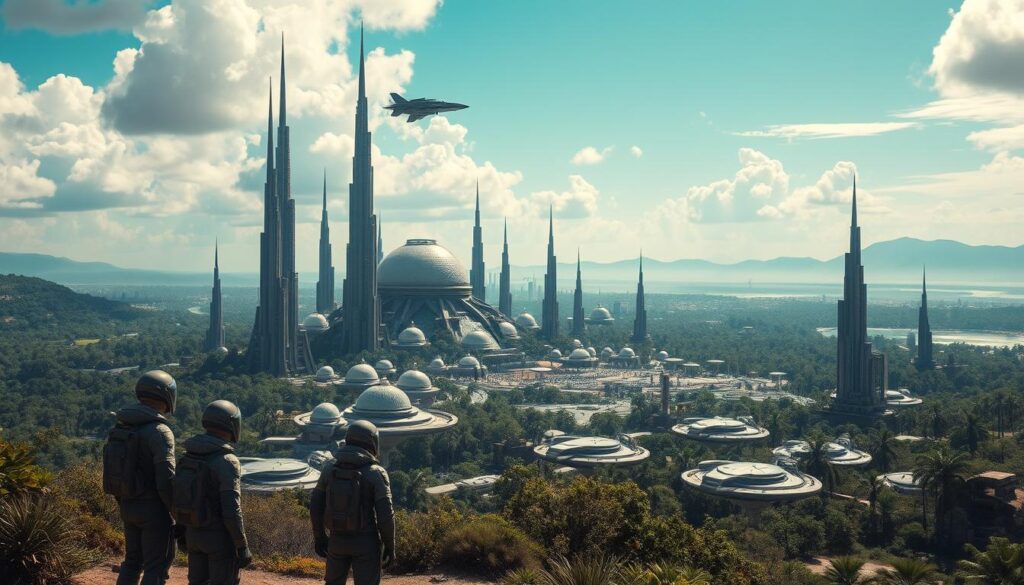
Speculative fiction storytelling often dreams of colonies on Mars or asteroids full of resources. But these stories remind us that surviving on other worlds first means solving Earth’s environmental crises. Here’s how space helps us care for our planet:
- Climate models refined by studying Venus’ greenhouse effect
- Water purification tech inspired by Mars rover designs
- Renewable energy systems tested in space habitats
| Earth | Mars |
|---|---|
| Ozone layer protects life | Thin atmosphere causes radiation risks |
| 71% water coverage | No liquid water on surface |
| Seasonal weather cycles | Extreme temperature swings |
Every rover wheelprint on the moon teaches us to tread lightly. The Apollo missions’ soil samples showed us unexpected lunar dust behavior. This knowledge helps us mine safely on Earth. Balancing ambition with caution means:
“Exploring space responsibly is the ultimate sustainability challenge.” – Dr. Sarah Lin, Planetary Scientist
From solar panel efficiency boosted by studying sunlit asteroids to drought-resistant crops modeled after Martian soil experiments, space offers solutions. Speculative fiction storytelling may dream of utopian colonies. But today, our focus is on nurturing our home planet first.
The Art and Literature Inspired by the Stars
Human creativity has always been inspired by the cosmos. From Van Gogh’s swirling skies to today’s digital art, we see our endless curiosity in art and literature. This mix of science and imagination shapes our stories and visual art, guiding us to explore future visions of life beyond Earth.
Notable Works That Illuminate Our Cosmic Dreams
Books like 2001: A Space Odyssey and Dune mix science with myth, showing humanity’s place among the stars. Paintings by Chesley Bonestell and films like Interstellar combine real astronomy with creative stories. These works push us to dream of new worlds and technologies.
Artists and Their Interpretations of Space
- Concept artists like Ron Miller create stunning, realistic pictures of distant planets, mixing data with beauty.
- Public installations, like the Starfield sculptures in Houston, make us think about cosmic scales.
- NASA’s art programs work with creatives to show missions, linking science and beauty.
The Influence of Astronomy on Science Fiction
“The purpose of 2001 was to make people feel the wonder and mystery of space.” — Arthur C. Clarke
Authors like Ursula K. Le Guin and Andy Weir use astronomy in their stories. They write about alien worlds or space travel. These stories turn science into adventures, making us curious about exploring future visions. As we learn about exoplanets, artists and writers turn this data into dreams, showing us the universe’s endless possibilities.
The Future of Human Space Travel
Human space travel is on the verge of big changes. It’s a mix of dreams and careful planning. Innovations like reusable rockets and Mars habitats are changing how we explore.
Upcoming Missions and Innovations
SpaceX and NASA’s Artemis program want to send humans back to the Moon by 2025. They’re working on 3D-printed lunar bases and advanced propulsion systems. These could make travel faster and cheaper.
Private companies are testing space tourism shuttles. Governments are focusing on deep-space research. It’s an exciting time for space travel.
Possibility of Colonizing Other Planets
- Mars colonization projects plan to use Martian soil for building.
- Elon Musk’s Starship hopes to reach Mars by the 2030s.
- Scientists study Earth’s extreme places to learn about life on other planets.
Ethical Considerations in Space Exploration
“Every step into space must prioritize planetary protection and equitable access,” said Dr. Mae Jemison, leader of the 100 Year Starship initiative.
Should we change other planets’ ecosystems? Who gets to decide how to use resources on the Moon or Mars? It’s important to have rules to avoid misuse.
It’s about finding a balance between exploring and being responsible. This way, space travel can benefit everyone.
The Community of Space Enthusiasts
Looking at the stars isn’t just for scientists. Anyone can join the global community that loves space. Online platforms and local gatherings turn curiosity into connection. They show that cosmic dreams unite us all.
Social Media Sparks Astronomical Discussion
Every day, millions share stargazing photos and follow rocket launches. NASA’s Twitter, Instagram’s cosmic art, and YouTube’s virtual tours let anyone learn. Hashtags like #SpaceExploration turn personal interests into worldwide conversations.
Events Bring Stargazers Together
Planetariums host star parties where families watch meteor showers. Conventions like the International Space Development Conference mix professionals and fans. Local astronomy clubs let beginners use telescopes, blending fun with learning.
Global Networks Shape the Future
Groups like The Planetary Society and apps like Zooniverse invite anyone to analyze data. These networks fuel innovation, showing how teamwork can solve challenges. Every voice matters in this shared journey.
FAQ
What is speculative fiction?
Speculative fiction is a wide range of stories that are imaginative and fantastical. It includes science fiction, fantasy, and dystopian tales. These stories look at what could be, based on science or human experiences.
How does speculative fiction influence our understanding of the future?
Speculative fiction shows us different futures. It makes us think about the choices we make today. Through stories, it can inspire new ideas and warn us about possible outcomes.
Why is the analysis of speculative fiction important?
Looking into speculative fiction gives us a peek into what people value, fear, and hope for. It’s a way to explore big questions about our future. It makes us think deeply about what’s possible and what’s right.
What are some examples of utopian and dystopian narratives?
*The Handmaid’s Tale* by Margaret Atwood shows a dark future. *The Dispossessed* by Ursula K. Le Guin dreams of a better world. These stories show us the extremes of how society could be.
How does storytelling in speculative fiction differ from traditional narratives?
Speculative fiction breaks the rules of reality. It lets writers create new worlds and scenarios. It makes us think about the big ideas behind these stories.
What role does science play in speculative fiction?
Science is the base for many speculative fiction stories. It lets writers imagine possible futures. These stories can spark real talks about science and its ethics.
How can educators use speculative fiction in the classroom?
Teachers can use speculative fiction to make STEM subjects fun. It helps students think deeply about technology and society. It encourages creativity and talks about the future of science.
What is the significance of imagination in speculative fiction?
Imagination is key in speculative fiction. It lets writers and readers dream up new worlds. It inspires us to think big and explore all sorts of possibilities.
